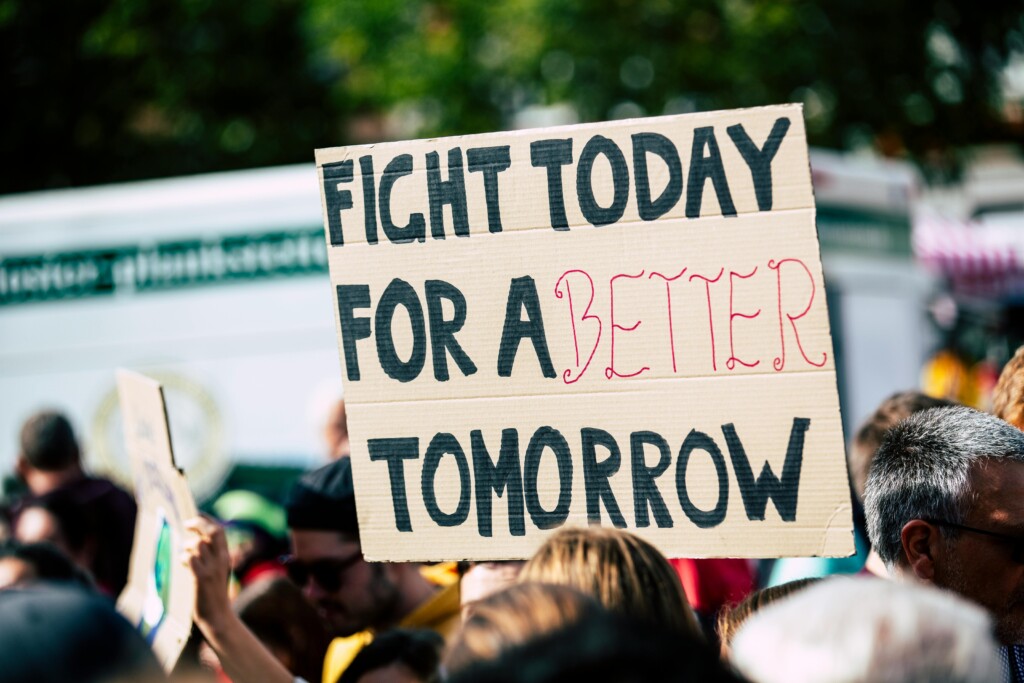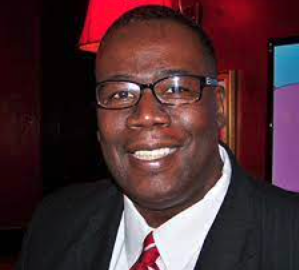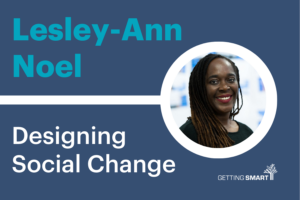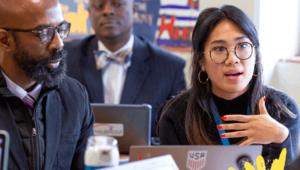The Power Of Peace Project: Healing Wounded Communities
Key Points
-
The Power of Peace Project is committed to redirecting underserved youth, reducing the overall incidence of youth crime, rehabilitating young inmates, lowering academic dropout rates, and inspiring young people to discover and develop the untapped power and potential within all of us.
-
Kids need positive, older role models pouring into them more than the streets do.

Youth violence causes death and injury. Homicide is the third leading cause of death among young people aged 10 to 24. Every day, approximately 12 young people are homicide victims, and nearly 1,400 are treated in emergency rooms for nonfatal assault-related injuries. Youth violence is expensive. According to Federal Data on Youth, “Youth homicides and nonfatal physical assault-related injuries result in an estimated $18.2 billion in combined medical and lost productivity costs.” Youth violence is widespread. One out of every five high school students reported being bullied on school grounds in the previous year.
One program is on a mission to eliminate youth violence! Following in the footsteps of world-renowned activists and civic and global leaders such as Martin Luther King Jr., Nelson Mandela, Mahatma Gandhi, and others, the Power of Peace Project is committed to redirecting underserved youth, reducing the overall incidence of youth crime, rehabilitating young inmates, lowering academic dropout rates, and inspiring young people to discover and develop the untapped power and potential within all of us.
The Power of Peace project
The Power of Peace movement, inspired by the Project, is spreading to schools and youth detention centers, and the Forty Days to Freedom series is bringing about significant changes in this generation of young people. Together, we are beginning to remove the shame and stigma that come to the families of the addicted and incarcerated, and we are showing that these young men and women can change and prepare to become productive citizens.
The Power of Peace Project (POPP) was founded in 2010 by the organization’s president, Kit Cummings, as he began to carry the message of peace, hope, and change into the most challenging places in America– the U.S. prison industrial complex. As Kit spoke to more and more inmates, momentum began to build in penitentiaries in different parts of the country. Behaviors began to change, and many of the men society had left behind and essentially given up on had rediscovered their power and potential. Some of the most challenging prisoners began to strive to become positive role models for their kids and younger brothers. With prison inmates desperately needing a purpose and young people needing positive role models, the unlikeliest group of individuals heeded the call to action and stepped up to make a change. Administrators, educators, wardens, and officers were all amazed at what happened. Peace began to take hold and spread.
On January 18th, 2011, twelve men at a dangerous maximum-security prison signed the “POPP Peace Pledge” to see if they could live peacefully with the men in Georgia’s toughest prison. Forty Days to Peace, which began on the 25th anniversary of MLK Day, would continue for the following forty days and beyond in that prison, and peace began to spread throughout the facility. This prison won Institution of the Year that year, going from worst to first.
As those men began to practice a lifestyle of non-violence, other men began to watch and become curious. Word spread throughout the compounds, and inmates began to talk about Forty Days to Peace. Instead of being labeled as “weak,” these men gained a new respect among the prison population. A peace movement had begun, one that these men had created in their commitment to non-violence toward each other, and the prison administration and staff began to take note. POPP was invited to more and more facilities.
Since that first peace pledge, POPP has gone to prisons and schools in the U.S., South Africa, Honduras, Mexico, Ukraine, and Guatemala. Since the first project in the first prison, Kit has taken the POPP message to over one hundred prisons, jails, detention centers, and rehab facilities.
The Power of Peace Project has expanded into a community development project, including a student development program, anti-bullying campaigns in alternative high schools, a media company, corporate motivational programs, empowerment activities, and organizational conflict resolution programming in wounded communities. The POPP peace movement took hold in Michigan and Ohio, where over two thousand inmates committed to peace and becoming positive role models, not only to inmates but also to a young generation that is losing its way. Some prisons saw violence decline by as much as 50 percent because of the ongoing project. Whether someone is a tough kid from an inner-city school or a college-prep kid living in the suburbs, it no longer matters—this is not a rich or poor, black, white, or Hispanic issue– because the need for peace is a common bond that we all share. Our kids are hurting and, in turn, hurting themselves and others. It is time for a new approach.

A Conversation with Kit Cummings
I had the opportunity to speak with Kit Cummings, the Founder of The Power of Peace Project. Kit is an award-winning author, teacher, and violence prevention specialist. When talking about the work of the Power of Peace Project, Kit stated:
“We interrupt and redirect young people who are on a perilous course, and set them firmly on the pathway to extraordinary dreams. Beginning with the youth, POPP heals wounded communities from the inside out.”
Kit Cummings
What is your vision for the Power of Peace Project?
Between our work in schools, juvenile courts, juvenile detention facilities, and law enforcement, I want to impact one million kids in the next ten years.
How does The Power of Peace Project support youth in school?
Through our POPP Protect the Dream program, we teach kids how to design a dream, manifest it, and then protect their dream, at all costs, from the Seven Dream Killers: Hanging with the Haters, Irresponsible Social Media, Drug and Alcohol Abuse; Unhealthy Relationships; Objectifying Classmates, Disrespect of Authorities; and Lowering Scholastic Standards.
How does the Power of Peace Project provide support for incarcerated Youth?
We partner with the Department of Juvenile Justice and teach conflict resolution skills and violence prevention through our POPP Forty Days to Freedom program. They learn the Seven Power of Peace Principles: Seek first to understand your opponent; Find common ground with your rival; Walk a mile with your adversary before you judge them; Practice active listening; Practice compassionate communication; When wrong, admit it and make it right; and treat your enemy with dignity and respect, even if you disagree. And we implement a reward-over-punishment model.
What are the greatest needs of the students whom you serve?
The greatest need is mentoring. Kids need positive, older role models pouring into them more than the streets do. Lack of parenting, especially among adult males, has left a void that the streets and gangs are readily filling. Gangs are giving kids more time and support than the local churches are.
What can our education system do to help the youth you serve?
We need to include more mandatory curricula on mental health, addiction and recovery, and emotional well-being. Teachers should be better compensated so that we can hire and retain quality educators. According to one study I recently read, a student has physically assaulted one out of every eight teachers in our country. We can not keep good teachers, leading to a lower teacher-to-student ratio/coverage, and the problem worsens.
What else can the education system do to prevent violence in its early stages?
We need effective programming in our in-school suspension, out-of-school suspension, and juvenile probation programs. We need to interrupt and redirect them when they first start getting into trouble rather than trying to catch them when it is often too late.
According to the Power Of Peace Project, “Hope is the New Dope,” children are beginning to believe in themselves and their dreams. Join them as they bring peace from behind the wire to the streets!






0 Comments
Leave a Comment
Your email address will not be published. All fields are required.